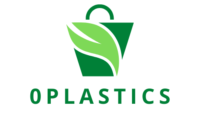Imagine gazing into a crystal ball, not to predict fortunes, but to envision the products that will shape our tomorrows. This is the essence of designing for the future, a process that transcends mere trend forecasting and delves into the heart of product development, reimagining it for a world in constant flux.
Gone are the days of linear, siloed approaches. The future demands an agile product development ecosystem, where flexibility, iterative learning, and user-centricity reign supreme. Let’s peek into this dynamic landscape and uncover the key principles that guide us in crafting products for the days ahead:
1. Embracing Uncertainty: The future is inherently unpredictable. Instead of clinging to rigid plans, successful design teams adopt a growth mindset, embracing experimentation and rapid prototyping. Minimum Viable Products (MVPs) become launchpads for continuous feedback loops, allowing teams to learn, adapt, and evolve alongside shifting user needs and technological advancements.
2. Deep Dive into the Human Connection: Empathy becomes the cornerstone of future-focused design. Understanding the evolving aspirations, anxieties, and values of users is crucial. This goes beyond demographics, delving into the emotional nuances that drive behavior and predict unmet needs. Tools like ethnographic research and emotional design principles help us bridge the gap between tangible products and intangible human experiences.
3. Future-Proofing with Emerging Technologies: From Artificial Intelligence (AI) to the Internet of Things (IoT), the technological landscape is transforming rapidly. Future-oriented design teams don’t just react to these changes; they actively integrate them into the product fabric. This could involve designing for seamless AI integration, anticipating changing privacy concerns surrounding IoT devices, or even exploring the potential of immersive technologies like augmented and virtual reality.
4. Sustainability Takes Center Stage: The future we design cannot be divorced from the environment we inhabit. Sustainable practices are no longer an afterthought but an integral part of the design process. From selecting eco-friendly materials to minimizing production waste and ensuring product longevity, every decision is made with conscious consideration for the planet’s well-being.
5. Collaboration is Key: Designing for the future requires diverse perspectives and expertise. Silos crumble as cross-functional teams – engineers, designers, marketers, and even customers – come together to brainstorm, prototype, and test ideas. This collaborative spirit fosters innovation, ensuring that products are not just technically sound but also resonate with the changing social and cultural fabric.
The future doesn’t wait for us to catch up. Designing for it requires a bold leap of imagination, coupled with a grounded understanding of user needs and technological possibilities. By embracing these core principles, we can craft products that not just adapt to the future but actively shape it for the better. This is the true essence of designing for the future: a transformative journey where creativity meets foresight, and the products we create become stepping stones to a brighter tomorrow.
